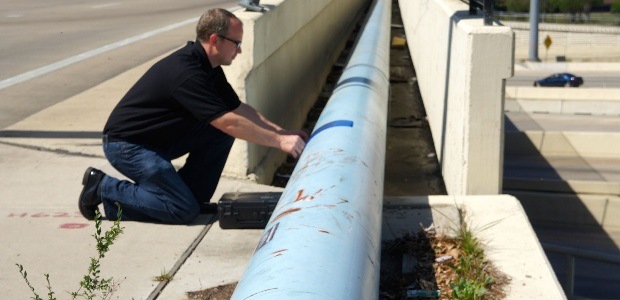
DOT's Volpe Center Touts Pipeline Sensors' Prowess
The Pipeline and Hazardous Materials Safety Administration awarded Phase I funding of $150,000 in June 2011 that allowed for a proof of concept to be developed, and Generation 2 Materials Technology LLC was chosen for a Phase II award of $1 million in 2012.
Touting a pipeline safety success story, an article posted to DOT's Fast Lane blog involves a project administered by the agency's Volpe National Transportation Systems Center. It involves sensors -- specifically, Houston-based Generation 2 Materials Technology, LLC's non-destructive pipeline stress analysis sensors developed with the help of Small Business Innovation Research funding. Noting that "it can be easy to forget the vast network of pipelines, spanning hundreds of thousands of miles across the country, transporting the oil that heats our homes and gasoline that fuels our cars," the article reports that managing pipelines' integrity was mostly reactive and based on visual appearance, such as major deformations and stresses that "provided hints to potential fractures or warping."
Generation 2 Materials Technology produced the sensors in 2011. They can determine the through-thickness residual stresses of materials that have been built to withstand pressure, which can reveal pipeline stress before it is visible. The Volpe Center administers the SBIR program to help entrepreneurs develop innovative solutions to complex transportation challenges.
In this case, the Pipeline and Hazardous Materials Safety Administration awarded Phase I funding of $150,000 in June 2011 that allowed for a proof of concept to be developed, and Generation 2 Materials Technology was chosen for a Phase II award of $1 million in 2012. "The award afforded founder Angelique Lasseigne the opportunity to hire new help as her company grew from 2 to 12 employees, and she's about to hire more," according to the article.
The company's sensors are now in use in the nuclear, aviation, and maritime industries and for assessing the structural integrity of transportation infrastructure, such as bridges. "The SBIR program is going to be the future of giving opportunity to future generations," Lasseigne said. "We need the opportunity to keep our intellectual property and the opportunity to lead our companies because you never know who will be the next Apple."